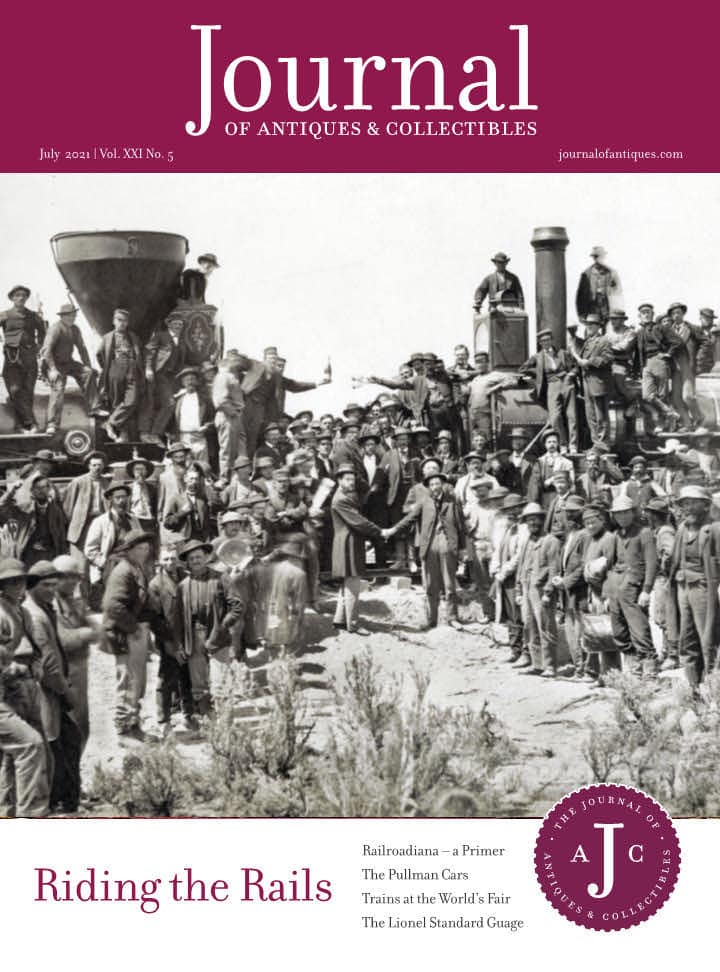Like the Internet in the second half of the 20th century, trains were the major disrupter of the 19th century. They changed the way we brought our goods to market, where we lived, and how we traveled. They raised towns around a few miles of track, provided employment, and created wealth. They brought us closer together as a country and captured our imagination with where they could take us. As a country, we were fascinated by their sheer size and power, and the novelty of the technology that made it all possible. Trains represented progress and our aspirations as a country. Those themes quickly found their way into the American zeitgeist of the 20th century, and continue as dominant themes in all aspects of our life, reinforced through the songs we sing, nursery rhymes we remember, and the shows, movies, and books we enjoy to this day.
Trains have been a theme in both traditional and popular music since the first half of the 19th century and over the years have appeared in all major musical genres, including folk, blues, country, rock, jazz, world, classical and avant-garde. Work songs, ballads recounting riveting exploits, and instrumental echoes of the once familiar sounds of the steam locomotive have enshrined the railroad in our musical memory.
The earliest known train songs date to two years before the first public railway began operating in the United States, both written to commemorate the groundbreaking of the Baltimore & Ohio Railroad in 1828: “The Carrollton March,” composed by Arthur Clifton, and “Rail Road March” by Charles Meineke. Since then, songs about trains have been written and recorded by almost everyone who is anyone in popular and traditional music, from Boxcar Willie to the Grateful Dead, B.B. King, and Cyndi Lauper. Perhaps one of the most enduring and iconic train songs is, I’ve Been Working on the Railroad, first published in 1894 and recorded in 1927. In the years following its release, this American folk song has been adopted as a popular children’s song and is still sung today, generations later.
Trains have also been used both symbolically and as a literary device in stories and novels since the mid-19th century. In Leo Tolstoy’s Anna Karenina, first published in 1878, trains are a recurring motif throughout the story, with several major plot points taking place either on passenger trains or at stations in Saint Petersburg or elsewhere in Russia. Trains are also used as a popular theme and backdrop in many 20th-century crime and thriller novels. Perhaps one of the most famous is Murder on the Orient Express, a Hercule Poirot mystery written by Agatha Christie and first published in 1934. The story takes readers on a ride aboard the elegant Orient Express of the 1930s, snow-bound in Yugoslavia with a killer on board. Christie’s popular novel of the day has gone on to be adopted for film, radio, television, stage, and games. Today, the Orient Express is a pop culture reference to the elegant age of rail travel in the first half of the 20th century.
Trains in movies also have deep roots, dating back to the early days of cinema. The Great Train Robbery, a silent western film released in 1903 by the Edison Manufacturing Company, follows a gang of outlaws who hold up and rob a steam locomotive at a station in the American West. The General, a 1926 American silent comedy film, was inspired by the Great Locomotive Chase, a true story of an event that occurred during the American Civil War. More recently, iconic films such as Strangers on a Train (1951), The Taking of Pelham One Two Three (1974), The Darjeeling Limited (2007), and remakes of Murder on the Orient Express remind us that trains and train travel remains popular movie themes. These and countless other films forever associate train movies with damsels in distress, hobos, bandits, romance, suspense, and tales of adventure and intrigue.
The indoctrination of trains into our popular consciousness starts at a young age. Children for generations have grown up with the life lesson of optimism and hard work pay off learned from The Little Engine That Could, first published in 1930. My children grew up watching Thomas the Tank Engine and Shining Time Station, first with George Carlin as the conductor and later, Ringo Starr. Many model train collectors will tell you they caught the bug as a child.
Our love affair with trains as a primary mode of transportation may have waned in the second half of the 20th century but not our interest in all things trains. The collector market for “Railroadiana” items and collections is stronger than ever, with everything from model trains and signage to passenger schedules and train company stock certificates routinely coming to auction.
In this issue we take you on a train trip into our industrial history with profiles on George Pullman and Peter Cooper, take a look at trains on display at the World’s Fair, explore the collectability of Lionel Signature Gauge trains, and share the story behind railroad pocket watches and fobs. Hope you enjoy the ride!





Related posts: